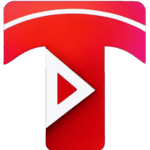JWST: Looking Beyond The Pretty Pictures
The James Webb Space Telescope isn't just for finding Pinterest worthy pictures, we're finding some amazing details in the sometimes blurry background photos.
Hosted by: Savannah Geary (they/them)
----------
Huge thanks go to the following Patreon supporter for helping us keep SciShow Space free for everyone forever: Jason A Saslow, David Brooks, and AndyGneiss!
Support SciShow Space by becoming a patron on Patreon: https://www.patreon.com/SciShow
Or by checking out our awesome space pins and other products over at DFTBA Records: http://dftba.com/scishow
----------
Looking for SciShow elsewhere on the internet?
SciShow on TikTok: https://www.tiktok.com/@scishow
SciShow Tangents Podcast: http://www.scishowtangents.org
Facebook: http://www.facebook.com/scishow
Twitter: http://www.twitter.com/scishow
Instagram: http://instagram.com/thescishow
----------
Sources:
https://exoplanets.nasa.gov/
https://www.space.com/james-webb-space-telescope-lava-worlds
https://exoplanets.nasa.gov/news/167/astronomers-discover-first-ice-giant-exoplanet/
https://exoplanets.nasa.gov/exoplanet-catalog/5673/wasp-39-b/
https://www.jpl.nasa.gov/news/nasas-webb-detects-carbon-dioxide-in-exoplanet-atmosphere
https://exoplanets.nasa.gov/news/1715/nasas-webb-reveals-an-exoplanet-atmosphere-as-never-seen-before/
https://www.epa.gov/ozone-pollution-and-your-patients-health/what-ozone
https://www.nature.com/articles/d41586-022-03820-3
https://www.nasa.gov/feature/ames/tiny-dust-could-yield-big-answers-under-webb-telescope-s-gaze
https://academic.oup.com/pasj/article/71/2/27/5274622
https://www.amnh.org/exhibitions/permanent/the-universe/the-universe/what-are-active-galaxies
https://www.eurekalert.org/news-releases/967497
https://www.cfa.harvard.edu/news/active-galactic-nuclei-and-star-formation
http://www.astro.yale.edu/larson/papers/Paris95.pdf
https://www.britannica.com/science/Wolf-Rayet-star
https://science.nasa.gov/wolf-rayet-star-124-stellar-wind-machine
https://www.nasa.gov/image-feature/goddard/hubble-view-wolf-rayet-stars-intense-and-short-lived
https://solarsystem.nasa.gov/solar-system/sun/in-depth
https://esahubble.org/wordbank/stellar-wind/
https://universemagazine.com/en/james-webb-photographed-the-fingerprints-of-a-double-star/
https://www.eurekalert.org/news-releases/967204
https://www.eurekalert.org/news-releases/967672
https://hubblesite.org/science/stars-and-nebulas
https://www.space.com/james-webb-space-telescope-sparkler-galaxy
https://iopscience.iop.org/article/10.3847/2041-8213/ac90ca
https://esahubble.org/wordbank/globular-cluster/
https://www.sciencenews.org/article/james-webb-space-telescope-stars-earliest-born-sparkler-galaxy
https://www.space.com/universe-age-14-billion-years-old
IMAGES
https://www.nasa.gov/multimedia/imagegallery/image_feature_398.html
https://www.nasa.gov/image-feature/goddard/2018/hubble-captures-cluster-of-aging-stars
https://www.nasa.gov/image-feature/goddard/2022/hubble-snaps-a-portrait-of-a-globular-cluster
https://www.nasa.gov/image-feature/goddard/2022/nasa-s-webb-delivers-deepest-infrared-image-of-universe-yet
https://webbtelescope.org/contents/media/videos/2020/57/1297-Video
https://commons.wikimedia.org/wiki/File:WR140.png
https://esahubble.org/images/heic1509a/
https://www.nasa.gov/feature/goddard/2020/watch-a-10-year-time-lapse-of-sun-from-nasa-s-sdo
https://science.nasa.gov/wolf-rayet-star-124-stellar-wind-machine
https://www.jpl.nasa.gov/images/pia25432-dust-rings-in-the-wolf-rayet-140-system
https://www.nasa.gov/audience/forstudents/k-4/stories/nasa-knows/what-is-a-black-hole-k4.html
https://www.jpl.nasa.gov/news/nasa-gets-unusually-close-glimpse-of-black-hole-snacking-on-star
https://www.eurekalert.org/news-releases/952155
https://www.nasa.gov/feature/jpl/black-holes-hide-in-our-cosmic-backyard
https://exoplanets.nasa.gov/news/1715/nasas-webb-reveals-an-exoplanet-atmosphere-as-never-seen-before/
https://webbtelescope.org/contents/media/images/01FEE26XVSM851DHPVCE1KB4S2
https://www.jpl.nasa.gov/news/nasas-webb-detects-carbon-dioxide-in-exoplanet-atmosphere
https://www.youtube.com/watch?v=yv4DbU1CWAY&t=13s&ab_channel=NASA
https://webbtelescope.org/news/first-images/gallery/zoomable-image-southern-ring-nebula
https://webbtelescope.org/contents/media/images/4176-Imagehttps://www.nasa.gov/webbfirstimages
https://www.nasa.gov/webbfirstimages
https://www.eurekalert.org/multimedia/959801
Video Summary & Chapters
No chapters for this video generated yet.
Video Transcript
[ intro ]
The James Webb Space Telescope
has captured some truly
incredible images of our universe
since it was launched in 2021.
Countless glittering stars,
dense cosmic dust clouds,
and vast swirling galaxies
have all come right into focus.
But we didn’t send JWST to space just
to bring us new desktop backgrounds…
although those are pretty nice.
We sent it up there to help us do science
and learn about our universe,
which doesn’t always come
with jaw-dropping photos.
So here are some groundbreaking discoveries
that JWST has made possible that you
might not have seen on Instagram.
More than 5000 planets have been
discovered outside of our solar system,
and they’re made up of everything from
seas of molten lava to methane ice.
But aside from some broad observations,
it’s been a challenge to
determine the specific composition
of most exoplanets’ atmospheres.
But now, thanks to JWST, that’s all set to change.
Lying 700 light-years from Earth,
Bocaprins is an immense gas giant
that’s 1.27 times the size of Jupiter,
but with only about a quarter of Jupiter’s mass.
And this planet is insanely hot –
like, upwards of 900°C –
because it sits so close to its local star,
which it completely orbits every 4.1 days.
And when it eclipses this star,
some of that light is absorbed by or transmitted
through the gasses in the planet’s atmosphere.
JWST was able to detect infrared
transmissions that passed
through Bocaprin’s atmosphere which helped
researchers determine its composition.
This data has given us the most detailed
breakdown of /any/ exoplanet’s atmosphere
that we’ve ever been able to observe. ~
They found that its atmosphere contains
water, sodium, potassium and even sulfur dioxide,
another planetary gas not yet
seen in planetary atmospheres
outside our own solar system.
And, it’s the first evidence
for photochemical reactions,
or reactions that are caused by starlight,
on any planet outside our solar system.
Light from Bocaprins’ star splits
water into hydrogen and hydroxyl,
and these molecules react with hydrogen sulfide
in the atmosphere to produce sulfur dioxide.
A similar reaction on Earth produces
the ozone gas in our ozone layer,
which protects us from most
of the sun’s UV radiation
and makes our Earth habitable.
So, photochemistry on exoplanets could
be essential in preparing them for life.
If we want to find life out there, we could
start looking specifically at the planets
where this is happening.
As it turns out, JWST isn’t just letting
us get up close looks at planets.
It’s letting us see the stuff /inside galaxies/.
Our universe is absolutely littered
with a type of organic molecules


 Install Tubelator On Chrome
Install Tubelator On Chrome






